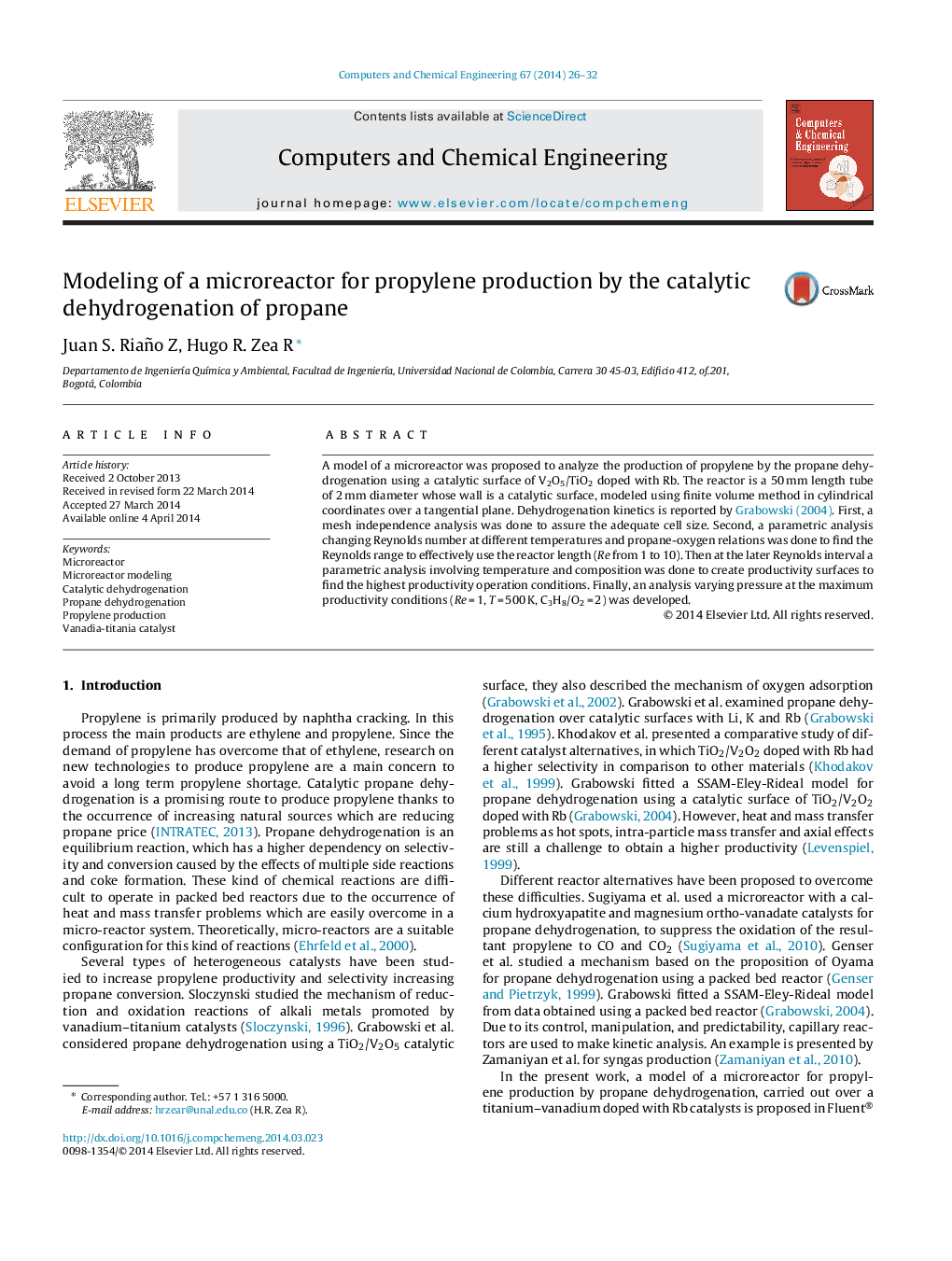| Article ID | Journal | Published Year | Pages | File Type |
|---|---|---|---|---|
| 172378 | Computers & Chemical Engineering | 2014 | 7 Pages |
•We model a propane dehydrogenation microreactor for propylene production.•We examine the dependence of productivity on Reynolds, temperature, and pressure.•Productivity has a parabolic behavior against temperature.•At high pressure dehydrogenation rate tends to be faster than combustion reactions.•Highest productivity occurs at 500 K, Re 1, C3H8/O2 = 2 and 1.5 bar.
A model of a microreactor was proposed to analyze the production of propylene by the propane dehydrogenation using a catalytic surface of V2O5/TiO2 doped with Rb. The reactor is a 50 mm length tube of 2 mm diameter whose wall is a catalytic surface, modeled using finite volume method in cylindrical coordinates over a tangential plane. Dehydrogenation kinetics is reported by Grabowski (2004). First, a mesh independence analysis was done to assure the adequate cell size. Second, a parametric analysis changing Reynolds number at different temperatures and propane-oxygen relations was done to find the Reynolds range to effectively use the reactor length (Re from 1 to 10). Then at the later Reynolds interval a parametric analysis involving temperature and composition was done to create productivity surfaces to find the highest productivity operation conditions. Finally, an analysis varying pressure at the maximum productivity conditions (Re = 1, T = 500 K, C3H8/O2 = 2) was developed.
